
views
It was February 2002, and Narendra Modi was contesting his first-ever election. He became the chief minister of Gujarat on October 7, 2001. As per the constitutional requirements, he had to be elected to the assembly within six months of assuming the CM’s chair.
It wasn’t a particularly encouraging time for the BJP in the state. It had faced defeats in successive elections. From taluka, district, and corporation elections to bypolls to the assembly and the Lok Sabha, the saffron party faced unfavourable outcomes. These also included the Sabarmati seat under the Gandhinagar Lok Sabha constituency of former deputy prime minister Lal Krishna Advani.
Modi became CM in 2001
Just two weeks before Modi became the chief minister of Gujarat for the first time, the Sabarmati bypoll results were out on September 22, 2001. Congress candidate Narhari Amin, who joined politics as a student and was the deputy chief minister during the 1994-95 government, defeated the BJP candidate by a big margin of 18,470 votes.
It was an embarrassing scenario for the BJP, which had won the seat in 1995 and 1998. Interestingly, the name of the party’s candidate in the by-election, Babu Jamnadas Patel, was also abbreviated as “BJP”. Amin also received help from Yatin Oza, who had defeated him in the 1995 and 1998 assembly elections as a BJP candidate. The Sabarmati seat fell vacant after he quit and Yatin campaigned for Amin after joining the Congress.
The BJP also lost the Sabarkantha Lok Sabha seat, which fell vacant after the death of Nishaben Chaudhary, the second wife of former Gujarat chief minister and senior Congress leader Amarsinh Chaudhary. The BJP lost the seat to Congress candidate Madhusudan Mistry. After the two by-elections, the top brass of the BJP realised the party was in a vulnerable position in Gujarat. It decided to remove Keshubhai Patel and send Modi from Delhi to become the chief minister of Gujarat.
Challenge of first election
Not only was Modi entrusted with the responsibility to bolster the party but also to strengthen the government and administration. The challenge was also to get elected to the assembly. Modi had served as the BJP’s general secretary at the state and national level. He had proven his mettle as a brilliant strategist, helping the party form governments in several states and hundreds of candidates get elected to assemblies and Parliament. But this time the challenge was different as he himself was contesting an election for the first time.
Modi was also facing rebellions within his own party. Keshubhai Patel was angry after being removed as the chief minister; several other leaders within the party were also against Modi. Haren Pandya, who was the minister of state for home in the Keshubhai Patel government and also the minister of state for revenue under Modi, refused to vacate his Ellisbridge seat for him. It was Modi who had given the ticket to Haren Pandya to contest from this seat against the advice of many big leaders of the party. The same Haren Pandya did not agree to vacate his seat for Modi, while according to tradition, any party MLA would unquestioningly leave his seat for the chief minister, and this was Narendra Modi, whose strategic skills not only led to the victory of the BJP in 1995 but also in 1998 in Gujarat.
Witnessing the political upheaval within the BJP, the Congress got very hopeful of coming back to power in Gujarat after being ousted by Narendra Modi’s ingenuity in 1995 when the saffron party could finally form the government. The Congress’s confidence wasn’t without reason.
Panchayat and municipal election results indicate what is to follow in a state. The Congress had defeated the BJP in these elections. Even the Ahmedabad Municipal Corporation, in which Modi had proven his organisational skills by bagging victory for the BJP in 1987, had been taken over by the Congress. And the story was the same in most other places.
Congress’s ploy
Not just the Congress, but most political pundits also felt that the BJP was going to lose in Gujarat, considered to be the laboratory of the Sangh, in the 2003 assembly elections. When Modi had to go to Rajkot, far away from state capital Gandhinagar, to fight for an assembly seat, the Congress strategy was to not let him get elected, to give him a taste of defeat and shatter the morale of the BJP.
Under this strategy, all the big leaders of the Congress swooped on Rajkot. Notorious for factionalism, this time Congress leaders showed unprecedented unity. Not just former chief minister Amarsinh Chaudhary, but ex-CM Chimanbhai Patel’s wife and former union minister Urmilaben Patel was also in Rajkot for the filing of nomination papers by party candidate Ashwin Mehta. Also present was Shankersinh Vaghela, who was once a top leader of the Gujarat BJP and had broken away from the party in 1996, floated the Rashtriya Janata Party, and became the CM for a year with the Congress’s support. Later, he merged his party with the Congress.
Congress leaders had camped in Rajkot, starting from Naresh Rawal, leader of the opposition in Gujarat Assembly and close confidant of Ahmed Patel, to Narhari Amin. After all, Amin had registered a stunning victory in the bypolls held just before the elections. He became an MLA again after losing twice and was the poster boy of the Congress.
Personal attacks
Everything is fair in politics and love, but the Congress and its strategists had crossed all limits, launching personal attacks against Modi. This was the election of Rajkot, when the Congress tried to make OBC Modi feel like a “lesser man”, 16 years prior to Mani Shankar Aiyar’s statement in 2018. In Rajkot, anonymous pamphlets were distributed, asking people whether they would vote for a person of the Ghanchi caste. This was the first time the people of Gujarat, including Rajkot, came to know about Modi’s caste; no one had ever paid attention to it before.
Incidentally, the same opportunist Congress had included more than two dozen backward castes in the OBC reservation list on July 25, 1994, just eight months before the 1995 assembly polls. Modi’s caste Modh-Ghanchi was also included in this list. Though the Congress would raise slogans of ending casteism, in Gujarat it constantly tried to gain ground by doing caste and communal politics.
Before going to the assembly elections of 1995, the Congress felt that it should secure votes for itself even among those backward castes that did not come under the purview of the Bakshi Panch. Justice Bakshi headed the commission to identify and recommend reservations for socially and educationally backward castes in Gujarat, and so even today, the OBC category is sometimes referred to as Bakshi Panch.
In 1994, the Congress government in Gujarat had also included the Yadav community in the OBC category, which was previously not in the state’s backward caste list. In the north, Yadavs were at the forefront of backward caste politics, led by Mulayam Singh Yadav and Lalu Prasad Yadav.
The Congress by then was used to political success in Gujarat by playing the caste card. In the 1980 election, the party, under the leadership of Madhavsinh Solanki, had won by playing the KHAM (Kshatriya, Harijan, Adivasi, and Muslim) card. In the assembly elections of 1985, it achieved the biggest success in Gujarat’s electoral history till then with the help of caste reservation. The Congress, led by Solanki, won 149 of the 182 seats in the state assembly, a record that was broken by the BJP only in the 2022 assembly elections, when it won 156 seats.
Congress’s desperation for power
Despite winning 149 seats in 1985, the Congress lost power in Gujarat in 1990 due to its misrule and corruption. The BJP and the Janata Dal won more seats than the Congress. After this, a government was formed in Gujarat under the leadership of Chimanbhai Patel. The BJP joined it for a few months. Without the support of the BJP, Chimanbhai could not get a majority in the House. But soon, fed up with the policies of the Chimanbhai government, the BJP withdrew support, and the Congress snuck back into power.
The Congress, which was stripped of power by the people of Gujarat, came back with the support of Chimanbhai Patel. Patel went on to merge his party, the Gujarat Janata Dal, with the Congress. Before the Emergency, Chimanbhai was the Congress CM in Gujarat who had to resign over allegations of corruption after the popular Navnirman movement by students. Slogans of “Chiman Chor” filled the air and Indira Gandhi had to force Patel to resign.
It was under this Chimanbhai Patel-led Congress government that the proposal to include PM Modi’s caste, Modh-Ghanchi, in the OBC category was raised. The Congress government, headed by Chhabildas Mehta, who became chief minister after Chimanbhai Patel’s death on February 17, 1994, issued a notification for it five months later, in July 1994.
The Congress and its leaders had made plans to get the support of more than two dozen castes, including Modh-Ghanchi, by including them in the OBC list. But those plans were dashed in the 1995 assembly elections, held within eight months of this notification. In February 1995, when the counting of votes was done, the BJP won 121 seats, reducing the Congress to just 45. There were 16 independent members in the assembly. In a twist of fate, Narendra Modi, who came from the Modh-Ghanchi caste, was the architect of the first BJP-led government in 1995, defeating the Congress.
From February 1995 to February 2002, there were big changes in the socio-political equations of Gujarat and the nation. In place of the Narasimha Rao-led Congress government of 1995, it was Atal Bihari Vajpayee’s NDA government at the Centre. Despite the Khajuraho Rebellion, the BJP was in power in Gujarat by winning the elections again in 1998, and by 2001, Narendra Modi was the chief minister, keeping Congress away from power in the state.
It was this desperation to regain power at any cost that led to a major shift in the Congress’s stance in February 2002. While earlier the Congress was trying to claim credit for adding the Modh-Ghanchi caste to the OBC list in 1994-95, the party now was trying to highlight Modi’s backward caste status to ensure a victory for its upper caste candidate.
Congress’s ‘forward’ card
While Rahul Gandhi is today dreaming of keeping the Congress afloat with a discourse on reservation and backward caste politics, his party had dreamt of winning the Rajkot-2 seat with the help of the forward castes. The Congress put a lot of thought into this battle of forward vs backward, after having mastered caste and communal politics. It felt that since there were a large number of Brahmin and Patel voters in the Rajkot-2 seat, Modi could be easily defeated by fielding a Brahmin candidate. After all, Modi’s own caste, Modh-Ghanchi, had a negligible presence in the constituency.
The Congress also felt that the Patel voters would be angry with the BJP for removing Keshubhai Patel as CM. In such a situation, its candidate would get the votes of upper castes like Brahmins and Patels and it would defeat Modi’s attempt to reach the assembly.
To highlight Modi’s OBC and Ghanchi background and to wean away upper caste voters like Brahmins and Patels from him and the BJP, Congress strategists put up huge posters in the Rajkot-2 assembly constituency. They read, “The pride of Ghanchi community, chief minister Narendra Modi is contesting from Rajkot-2. We welcome him.” The posters were put up by Congress leader Prithvisinh Jadeja. The Congress also took casteist digs at Modi.
Modi’s caste background had never come up in public discourse before, even though critics from within and outside tried to deride him as a Ghanchi in private. This was a time when politics was largely in the hands of upper castes. For leaders belonging to these castes, the success of a lower caste person like Narendra Modi was like an attack on their monopoly.
Brought up in the ethos of the Rashtriya Swayamsevak Sangh, Modi himself did not believe in playing the caste card. Here was the concept of the wider Hindu community, the mission to unite the society which was divided into and by castes. For Modi, the caste divide was on the lines of the economically underprivileged, youth, women, and tribals. Modi was ready to take everyone along; he was talking about the interests of five crore Gujaratis as soon as he became the chief minister.
However, the Congress was trying to make an issue in the Rajkot elections about Modi coming from a backward caste. Three years before this, the Modh-Ghanchi caste was included in the OBC list by the Centre. The caste was added to the OBC list on October 27, 1999, based on the 1994 decision of the then Congress government in Gujarat and its subsequent recommendation. The objective was to provide the benefits in education and jobs under the 27% reservation for OBCs to the Modh-Ghanchi caste, within the Supreme Court guidelines in the Indra Sawhney case.
Congress’s hypocrisy
In the month of February, ahead of the elections, Modi was attacked for being from a backward caste like Ghanchi. All kinds of personal attacks also followed. Modi was even projected as an outsider. Despite being born in Gujarat’s Vadnagar, Narendra Modi was an outsider for the Congress, a party that had already made Italy-born Sonia Gandhi its national president in 1998. Her only qualifications were that she was married to former Prime Minister Rajiv Gandhi and was the daughter-in-law of former Prime Minister Indira Gandhi.
In Rajkot, while the Congress was playing the Brahmin card by putting up Ashwin Mehta, in its internal elections held two years ago, it had shown its hypocrisy by re-electing Sonia Gandhi, born in a Catholic Christian family, as its president, instead of Jitendra Prasada, a Brahmin.
Modi overcomes challenges
Despite all the political and personal attacks of the Congress, Modi managed to win the Rajkot-2 seat in February 2002. However, the difficult circumstances in which Modi won this by-election can be gauged from the fact that apart from Rajkot-2, the BJP lost in two other assembly constituencies in Gujarat — Mahua and Sayajigunj — to the Congress. Modi won by a margin of only 14,728 votes. Before this, Vajubhai Vala had won the 1998 assembly election as a BJP candidate by a margin of about 28,718 votes against RJP’s Kashmiraben Nathwani. Kashmiraben was the daughter of Chimanbhai Shukla, who delivered the first victory in Gujarat for the Jana Sangh, from the seat right next to it, Rajkot-1, in 1967.
The counting of votes was held on February 24, 2002. The Godhra carnage took place on February 27, followed by riots in many parts of Gujarat. Modi was once again facing an opposition attack. To answer this, Modi once more decided to go to the people. In July 2002, he decided to dissolve the assembly, while its term was fixed till February 2003. As part of this campaign to gain the trust of the people of the state, Modi thought of going on a Gaurav Yatra. After all, following the 2002 Gujarat riots, his rivals had tried to attack the pride of Gujarat, and defamed the state in front of the world.
Modi planned to start the yatra from Fagvel in Kheda district, which was known for the famous temple of Bhathiji Maharaj. Bhathiji Maharaj is highly revered in the folk culture of Gujarat as he sacrificed his life for “gau raksha”. Bhathiji Maharaj, showing the valour of a true Kshatriya, left his wedding mid-way to save cows. He was martyred while fighting against the army of the Muslim ruler of Kapadvanj. In Gujarat, the significance of Bhathiji Maharaj and his temple cannot be overstated.
The Congress, however, tried to scuttle Modi’s plans. Due to opposition from the Congress, Modi changed the start date of the Gaurav Yatra to avoid any violent clashes. The new date was set for September 3, 2002. But this was not acceptable to the Congress, especially to its Gujarat unit president Shankersinh Vaghela, who had assumed the position on July 19.
Fagvel was part of Shankersinh Vaghela’s Lok Sabha constituency. This is where Modi was going to launch his Gaurav Yatra to challenge the Congress. This was unacceptable for Vaghela. Another thing that troubled him was that while he himself belonged to the Kshatriya community, Modi was going to start his journey from a place associated with a big Kshatriya hero. Naturally, in Modi’s eyes, Bhathiji Maharaj was the hero of the entire Hindu society, not just one caste or community. But Vaghela could not digest this.
As soon as Vaghela came to know that Modi was going to start the Gaurav Yatra on September 3 from Fagvel, he announced a parallel meeting at the same spot the same day. To make things more aggressive, the banner of Bhathi Sena, an organisation of Kshatriya youth named after Bhathiji Maharaj, was used. Modi knew the situation could go out of control. He was the CM and the home minister of the state, and the police and administration were under him. But, to avoid any conflict, he decided to step back.
Modi wrote a letter to Vaghela, who was once his senior party colleague. Modi said he would postpone his yatra once again and said that Vaghela should first hold his programme on September 3, after which he would start the Gaurav Yatra.
But the matter didn’t end there. On September 3, 2002, when Shankersinh Vaghela led a rally in Fagvel, slogans were raised against Modi and that too targeting his caste. From the stage of Vaghela, Jagdish Thakor, who was an aggressive leader of the Congress from the Thakor community, repeatedly used provocative and objectionable language from the stage, against Modi and the Ghanchi caste.
It should be noted that this same Jagdish Thakor was first made a Congress assembly candidate from Dahegam during the presidency of Sonia Gandhi. He also won from here in 2002 and 2007 and then was made a Lok Sabha candidate in 2009, when he won and became an MP. Not only this, he was also in charge of the state Congress at the time of the 2022 Gujarat assembly elections. In December 2021, Sonia Gandhi had appointed him to the post. But Thakor, who had abused Modi over his caste in 2002, had to bear the brunt of the Congress’s worst defeat in Gujarat when the party was reduced to just 17 seats in 2022.
Congress’s flip-flops
It’s a twist of fate that the same Congress, which attacked Modi for being OBC and Ghanchi 22 years ago and used the forward card to counter his backward caste status, is now questioning Modi’s backward caste credentials. That too when Modi has established himself as a messiah of the Dalit-backward-poor and unhesitatingly narrates the story of being from a backward caste and spending his childhood in poverty on various fora in the country and the world. And the world also takes note. After all, this journey of Modi coming from poverty and backward caste to becoming a global leader is exciting, astonishing, and unique.
On the other hand, Rahul Gandhi, whose great-grandfather Jawaharlal Nehru had opposed the caste census, is hoping to salvage his party’s and his own future by resorting to the politics of caste census. And the same Narhari Amin, who once fiercely opposed Modi and tried to defeat him in his very first election, is now exposing the lies of Rahul Gandhi and making it clear that the decision to include Modi’s Ghanchi caste in the OBC list was taken by the then Congress government of Gujarat, and not the BJP. Time is a powerful tool; the Congress and Rahul Gandhi must keep that in mind.










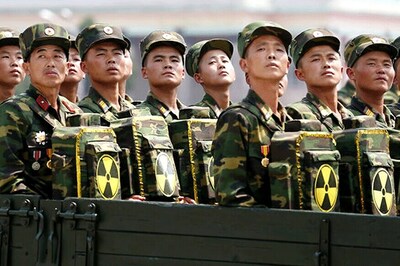


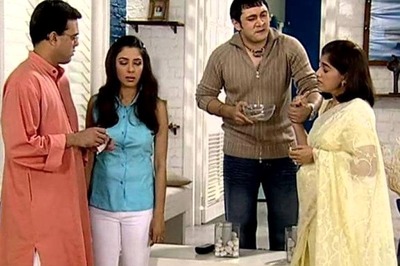
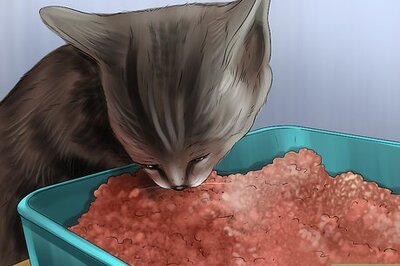
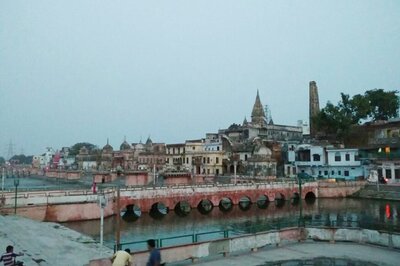

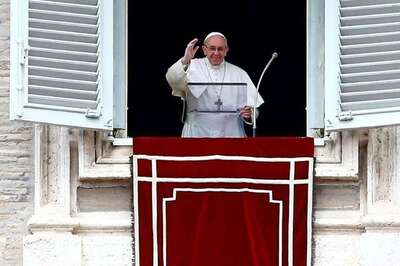

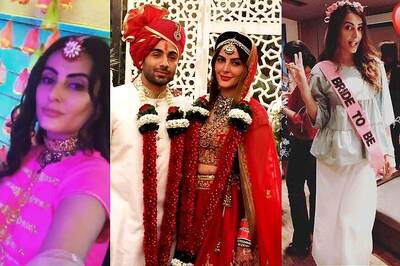
Comments
0 comment